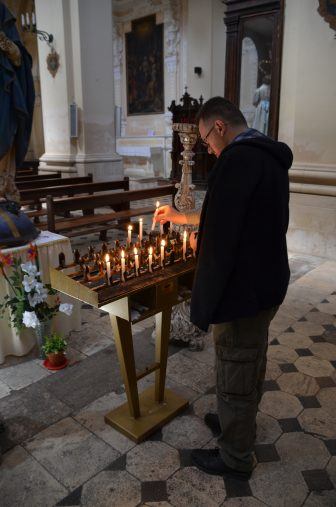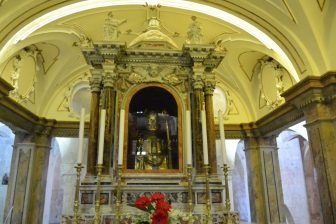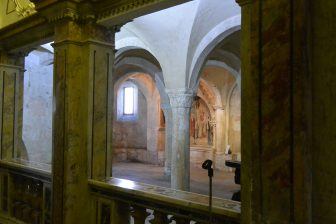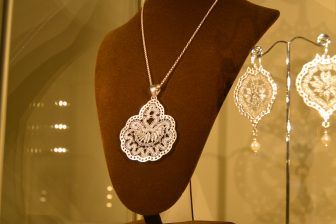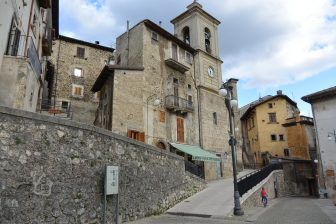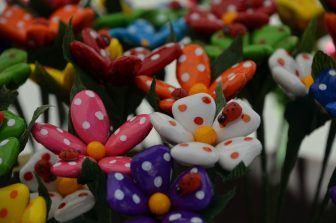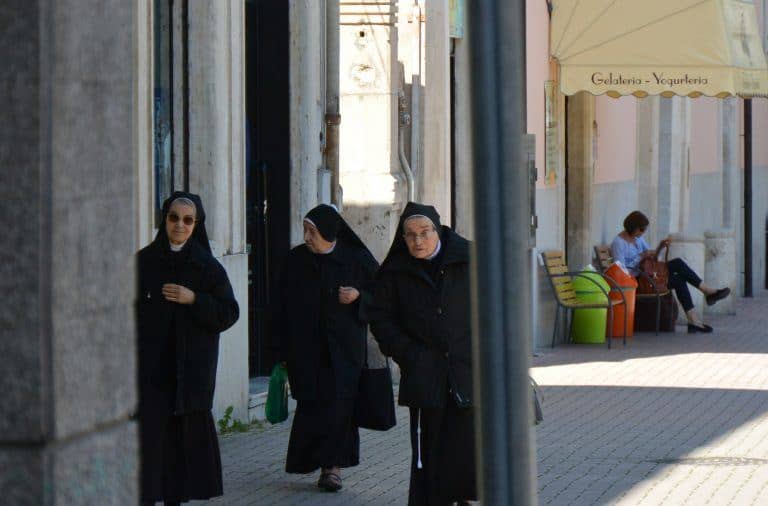
[ Apr.2018 ] When we were walking in Corso Ovidio street in Sulmona, a town in Abruzzo in the middle of Italy, we saw some pans for making waffles in a shop window.
Waffles are a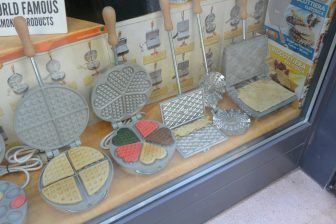
In the past, they made them using heavy iron pans and to complete baking, they used to say “Ave Maria” on one side and “Padre Nostro” (our father) they recite for the other side.
The person who told us this was Guido, who was showing us around the town.
According to him, in this region they recite these kinds of religious phrases, not just for baking waffles, but also whilst carrying out household chores, such as ironing.
This does not mean that they are praying all the time.
Instead, they recite these phrases to measure the time.
Apparently, Guido learned this from his grandmother.
Although the purpose may be for timing, it means that, here, religion is deeply rooted in their everyday life.
In fact, Guido himself seemed quite religious.
Every time we entered a church, he put his fingers in the holy water and, when we left, he knelt.
My husband also crosses himself when we enter and leave any Catholic churches.
In the next church we went to in Complesso SS. Annunziata, a complex which used to be a monastery, Guido gave some change and lit about four candles.
This complex is the most important building in Sulmona.
Originally, it was built as a hospital in 1320.
From 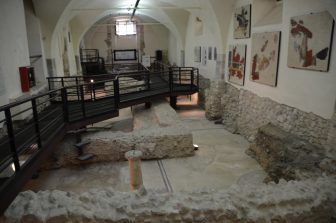
At the end of this site, there was a small archaeological museum with a ruin of a Roman house from the 1st century.
Apparently, this monastery complex was built upon the Roman ruins.
Guido said “In those days, people did not have the sense to preserve old things”.
That reminded me of a fortress we saw recently in Andalucia in Spain, which was built on ruins, and the Roman columns were utilised to support the doorway of the fortress.
This complex houses not only the archaeological museum, but also an ethnological museum, though we did not go there.
After this, we walked across the long park to get to the cathedral on the other side.
The proper name for this cathedral is Cattedrale di San Panfilo.
San Panfilo is the patron saint of this town and this cathedral is dedicated to him.
My husband said that he had never heard of this saint and Guido explained that Panfilo was born in Abruzzo and lived in the 7th century.
There is a silver statue of Panfilo at the altar and there are some of his bones within the statue.
We went down to the crypt, which is the oldest part of the cathedral.
We saw some frescoes there, probably from the 12th century.

